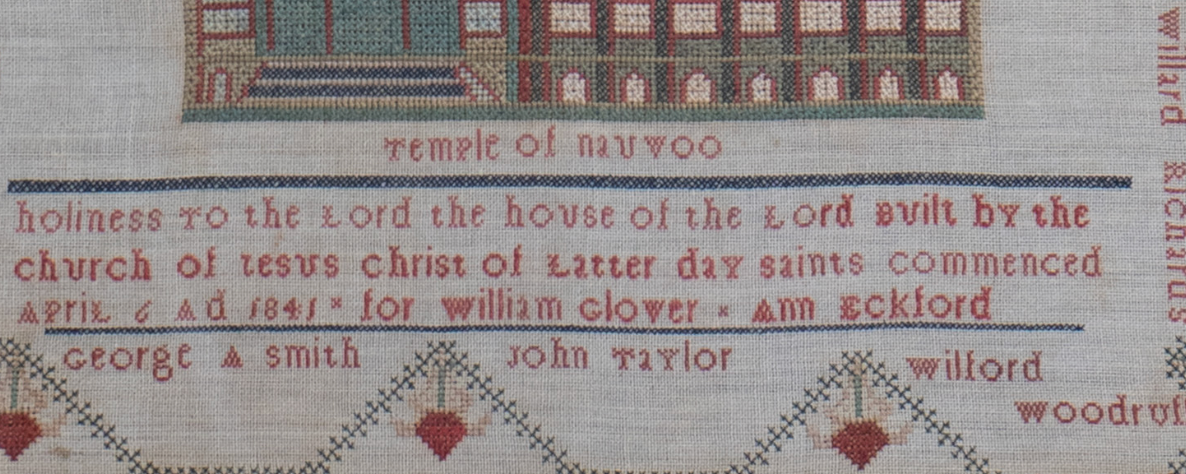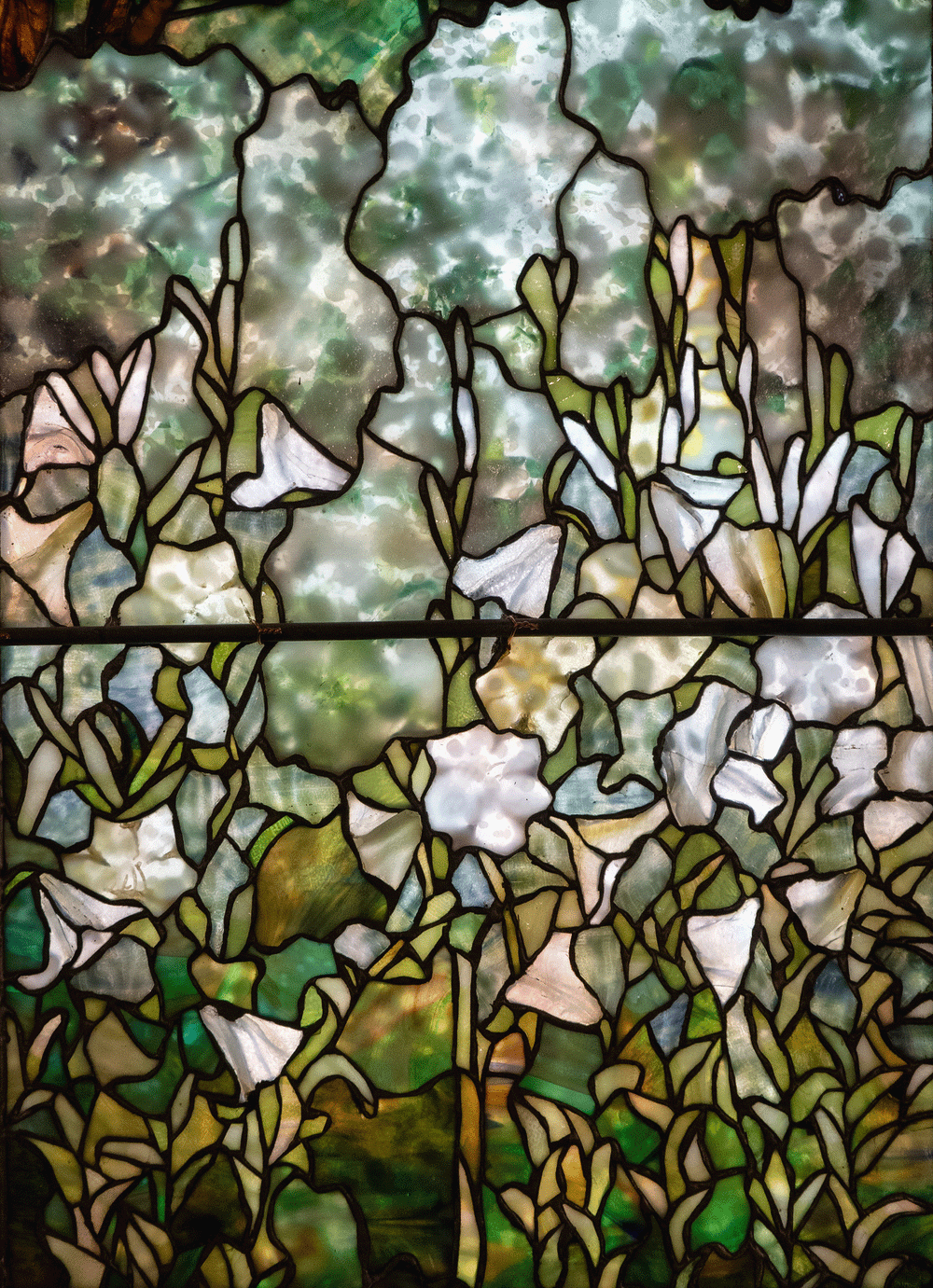Ann Eckford's Nauvoo Temple Sampler


Ann Eckford's Nauvoo Temple Sampler
Cross-stitched linen, ca. 1849
Ann (Anne) Eckford Williams (1836-1918)
18 ¾ x 14 ½ in.
This extraordinary sampler, hand-stitched by a teenage convert in mid-19th century Britain, is a rare and deeply personal expression of Latter-day Saint faith, devotion, and diasporic longing.
Created by Ann Eckford-later Ann Williams- ca. 1849, the needlework depicts the Nauvoo Temple, the sacred edifice built by early members of the Church of Jesus Christ of Latter-day Saints in Nauvoo, Illinois, and completed shortly before the Saints were forced to abandon it. The original temple was destroyed by arson in 1848, but it remained a powerful symbol of sacrifice and spiritual hope for members around the world.
Ann likely created the sampler as part of her domestic education, a common practice for girls in Victorian Britain, where embroidery was not only a skill but a tool for moral and religious instruction. Her design was based on a commemorative ceramic known as the "Twigg plate," produced in Staffordshire, England, in 1846 under the direction of LDS missionary Levi Richards. The central architectural rendering is bordered with stitched names of early Church apostles, but notably omits a prophet or First Presidency —an omission that reflects a unique transitional moment in Church governance following the martyrdom of Joseph Smith. Brigham Young appears as "President," with the other members of the Quorum of the Twelve arranged around the edges, as they assumed leadership during the westward exodus.
The names stitched in red and black thread are framed by a diamond border pattern, lending the piece a devotional and heraldic quality. Samplers like this are exceedingly rare among LDS material culture, and only a few are known to survive —two by Ann and one by her sister Jean (or Jane). One of Ann's samplers is held in the permanent collection of the Church History Museum; another is at the Daughters of Utah Pioneers Museum. The present work is among the finest of its kind and a touchstone for understanding how young female converts contributed to the spiritual and cultural memory of a people in motion.
Ann (Anne) Eckford was born in Corstorphine, Midlothian, Scotland, in 1836 to Alexander Eckford and Jemima Ann Robertson. She immigrated to Utah in 1860 and married Thomas Williams in Liverpool, England, in 1857. The couple settled in Salt Lake City, where they raised six children. In 1867, Ann and Thomas were anointed in the Salt Lake Temple by George A.
Smith, and in 1873, Thomas was appointed to the Salt Lake City High Council by Wilford Woodruff. After her husband's death in 1874, Ann eventually relocated to Los Angeles, where she lived until her death in 1918.
This sampler stands as a testament not only to Ann's needlework skill but also to the resilience and religious devotion of a generation of Latter-day Saint women whose faith and artistry helped preserve the legacy of a sacred building after it was lost.



